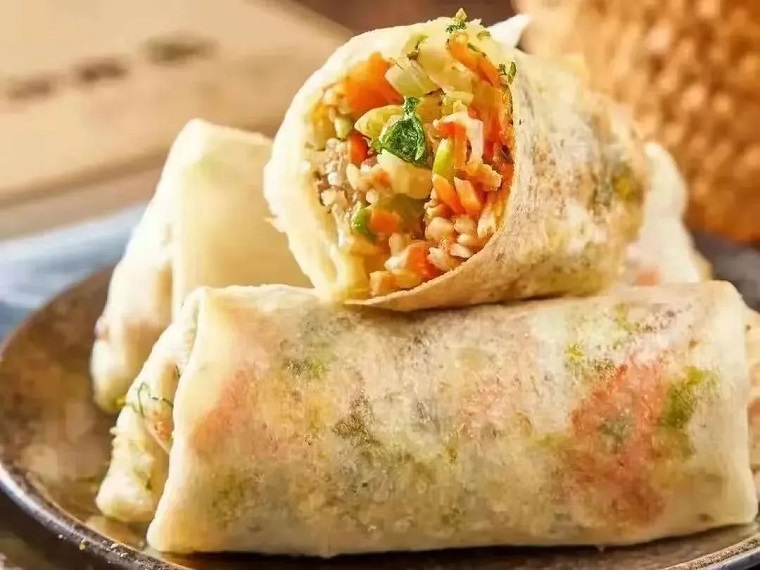
Chinese Spring Rolls: The Ultimate Make-Ahead Appetizer (Vegan Options)
If you think egg rolls are the pinnacle of crunch, wait until you meet their lighter, flakier ancestor – authentic Chinese spring rolls (春卷). These golden cigars of joy, filled with vibrant veggies and kissed by five-spice, have dominated Lunar New Year feasts for centuries. Now reinvented as gluten-free party snacks and #MealPrep stars, they’re the handheld answer to “How do I eat more vegetables?” trending on #FoodTok.
Why People Like Spring Rolls
- Texture wizardry: Less oil and less fat
- Dietary versatility: Naturally vegan, nut-free, low-carb
- Freezer hero: Fry frozen → 15-minute golden appetizers for surprise guests
Ingredients:
✦ 30g(1.06 oz) bean sprouts
30克豆芽
✦ 10g(0.35 oz) soaked black fungus,
10克泡发的黑木耳
✦ 50g(1.76 oz) carrots
50克红萝卜
✦ 100g(3.5 oz) lettuce
100克油麦菜
✦ 5 spring roll wrappers
5块春卷皮
✦ A little minced garlic
一点蒜末
✦ 1 teaspoon salt
1茶匙食盐
✦ 1/2 teaspoon white sugar
半茶匙白糖
✦ 1/2 teaspoon chicken powder
半茶匙鸡粉
✦ 1 teaspoon sesame oil
1茶匙香油
✦ Cooking oil
食用油
Step-by-Step Guide:
Step 1 :
Cut the lettuce into segments.
将苦麦折成段
Step 2 :
Cut the black fungus and carrot into shreds.
将黑木耳和胡萝卜切成丝
Step 3 :
Heat oil in a pot, add a little minced garlic and stir fry until fragrant.
起锅烧油,下入一点蒜末炒香
Step 4 :
Add the add the bean sprouts,shredded black fungus,shredded carrots and lettuce segments, stir fry evenly
加入豆芽黑木耳丝胡萝卜丝油麦菜,翻炒均匀
Step 5 :
Add 1 teaspoon salt,1/2 teaspoon white sugar,1/2 teaspoon chicken powder and 1 teaspoon sesame oil, stir fry evenly, then take out and put in a dish for later use.
加入1茶匙盐1/2茶匙白糖1/2茶匙鸡粉1茶匙香油,翻炒均匀,然后盛出一个碟子备用
Step 6 :
Heat oil in a pot, pan fry both sides of the Spring rolls with low heat until it is brown.
起锅烧油,用小火将春卷两面煎至焦黄
Step 7 :
Roll up the Spring rolls wrapper with fried ingredients, done .
炒好的食材用春卷皮卷起来,完成
Cultural Crossroads
- Tang Dynasty roots: Originally seasonal treats with spring veggies to celebrate renewal
- Nutrition boost: Cabbage’s sulforaphane + mushroom’s ergothioneine = cellular protection duo
- Modern twist: 68% of LA food trucks now offer “deconstructed spring roll bowls”
The History of Spring Rolls: From Ancient Rituals to Regional Delicacies
The origins of spring rolls can be traced back to ancient Chinese customs celebrating the arrival of spring. Their predecessors, known as chunbing (spring pancakes) or chunpan (spring platter), emerged as early as the Eastern Jin Dynasty (317-420 CE). During this period, people traditionally ate thin pancakes wrapped with fresh vegetables like lettuce and radishes on Lunar New Year’s Eve—a ritual symbolizing the rejuvenation of nature and the revitalization of the body after winter.
Over time, these seasonal treats evolved into distinct regional variations. In southern China, particularly the Yangzhou style, spring rolls showcase crisp vegetables and bean sprouts for a light, refreshing flavor profile. Northern versions, however, embrace heartier ingredients like pork and chives, delivering a more robust taste that reflects the region’s culinary traditions. Both styles preserve the dish’s enduring symbolism of renewal and vitality.
Global Twists
- Mediterranean: Feta + spinach filling with tzatziki dip
- Keto hack: Use thinly sliced daikon as wrapper
- Brunch fusion: Fill with scrambled eggs + smoked salmon
Tags of Spring Rolls
#Authentic Chinese spring rolls
#Gluten-free party snacks
#Make-ahead freezer meals
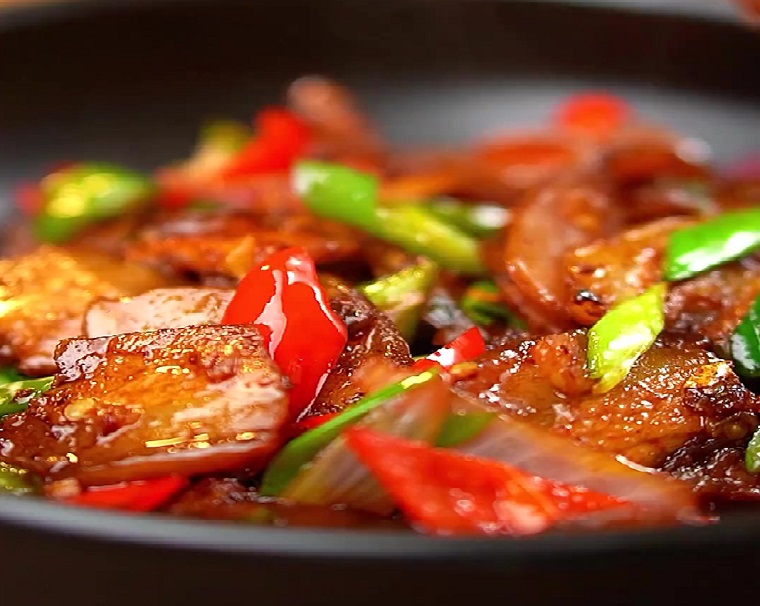
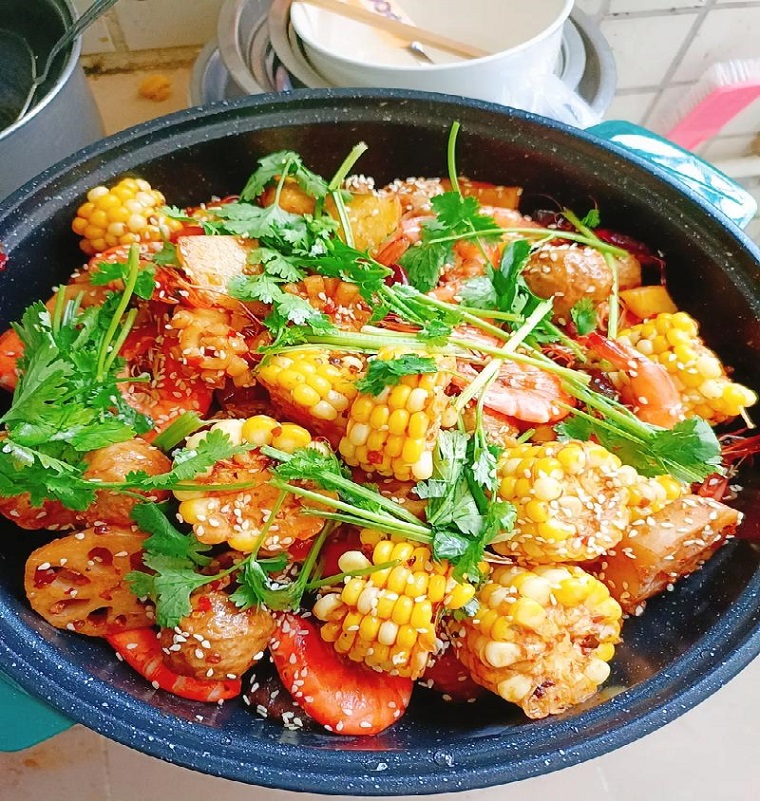
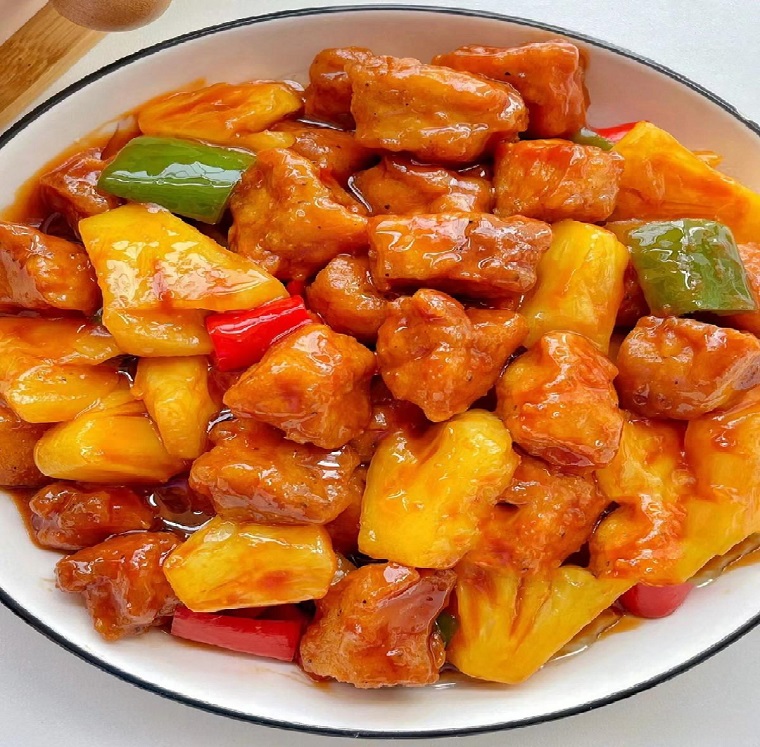
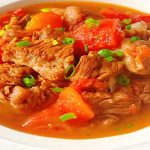

It’s fascinating how spring rolls reflect the diversity of Chinese cuisine across regions. The Yangzhou style sounds so fresh and light, perfect for warmer climates, while the northern version seems more comforting and hearty. I wonder if the choice of ingredients is purely cultural or also influenced by the availability of local produce. Do you think these regional differences make the dish more versatile or do they risk losing its original essence? Personally, I’d love to try both styles side by side to truly appreciate the contrast. How do you think modern chefs are innovating with this traditional dish? Would you say one style is more popular internationally than the other?